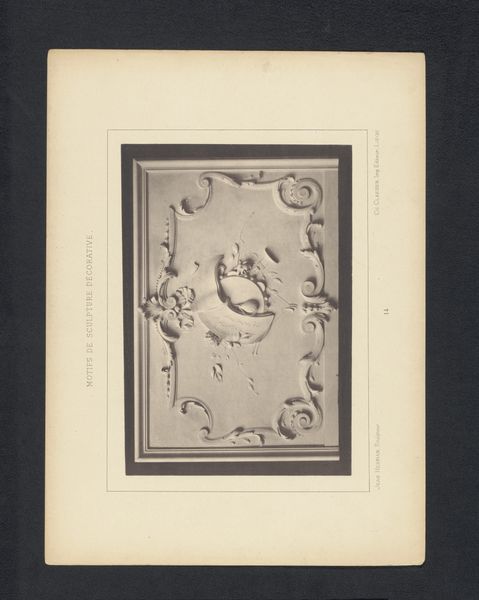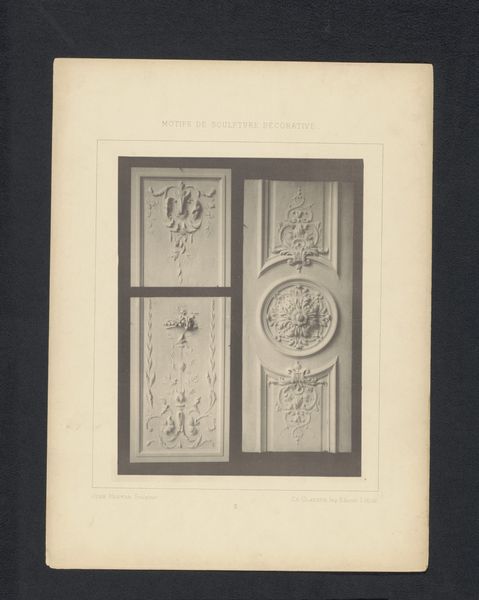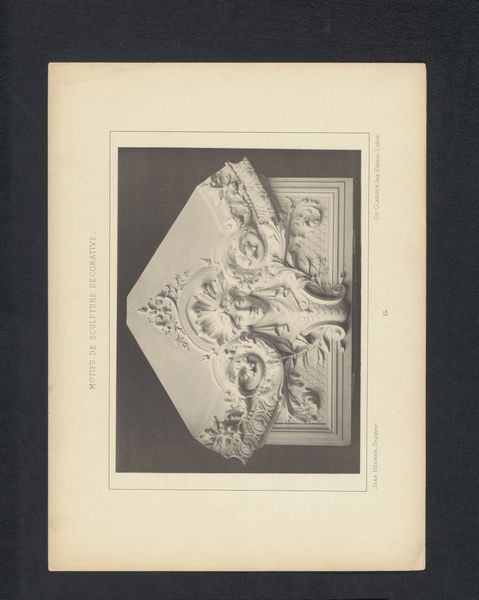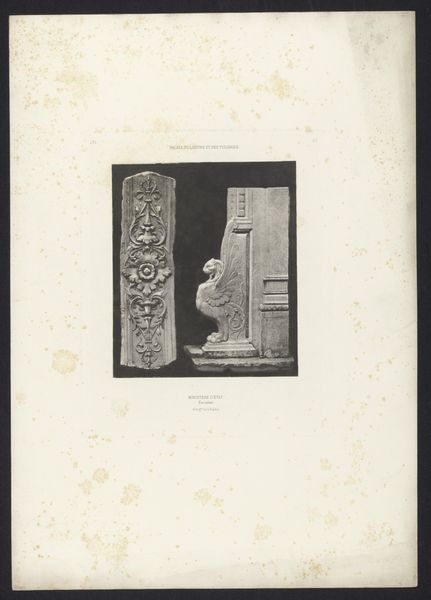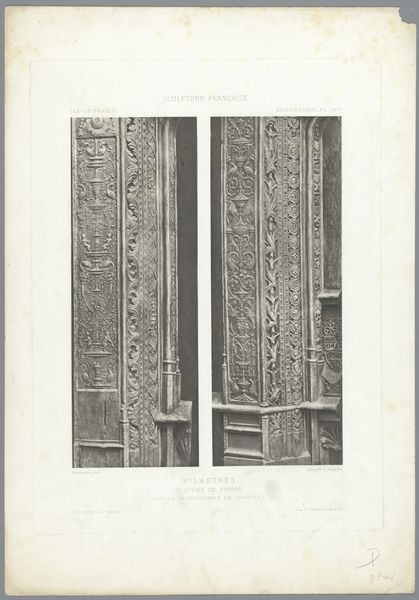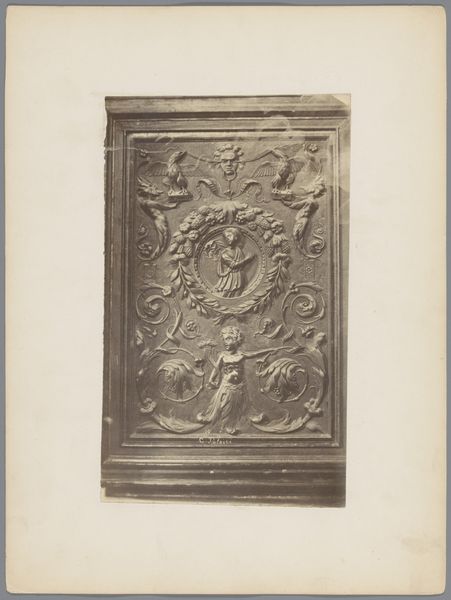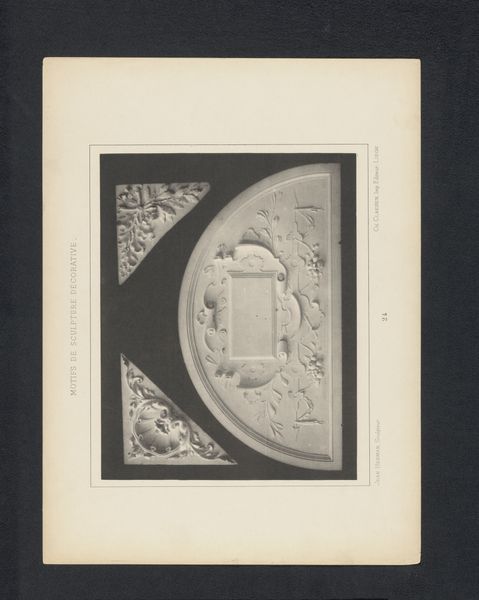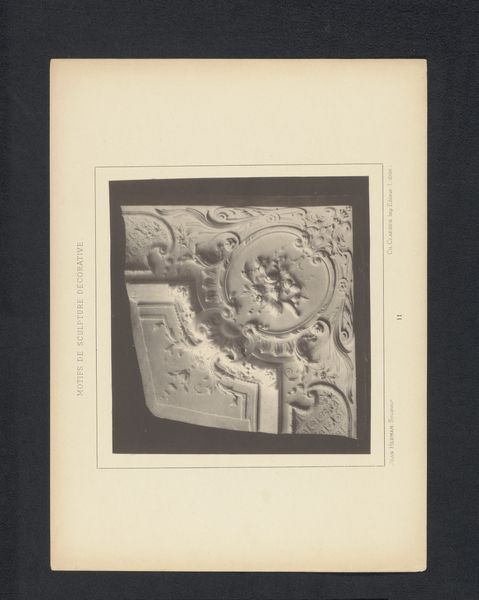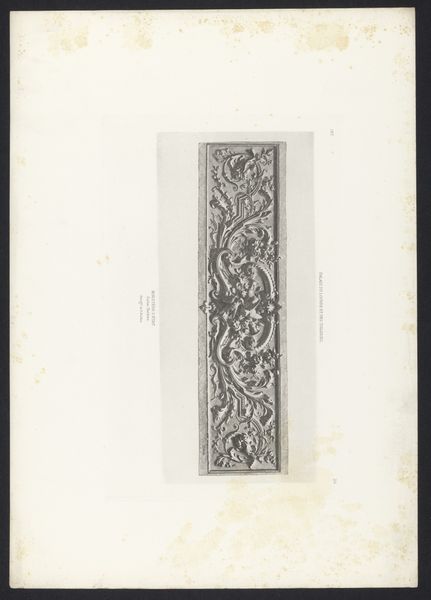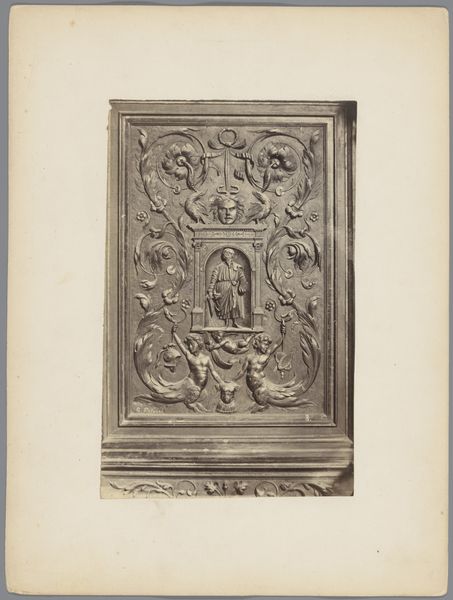
Twee reliëfs met gezichten, bladranken en putti, gebeeldhouwd door Jean Herman before 1880
0:00
0:00
#
type repetition
#
aged paper
#
toned paper
#
pale palette
#
old engraving style
#
white palette
#
personal sketchbook
#
unrealistic statue
#
embossed
#
columned text
Dimensions: height 177 mm, width 263 mm
Copyright: Rijks Museum: Open Domain
Curator: Before us, we have "Twee reliëfs met gezichten, bladranken en putti," which translates to "Two Reliefs with Faces, Foliage, and Putti," sculpted by Jean Herman sometime before 1880. Editor: The muted palette immediately lends it a ghostly quality, almost as though we are viewing the faint, time-worn imprint of memory itself. It’s interesting how the pale forms interact within their rectangular frames. Curator: Yes, the arrangement evokes the kind of visual language seen during the decorative excesses of the late Renaissance, yet imbued with burgeoning Romanticism. Note how Herman integrates the foliage—it symbolizes growth, but also mortality in art history, particularly combined with human faces and cherubic figures. Editor: And the framing, too. I mean, those sharp borders are stark. Almost aggressive given the delicate, ornate details within. I wonder what material he may have utilized. Stone? Plaster? It’s hard to know without any hue. Curator: Putti, of course, are representations of innocence, messengers between the divine and the earthly, all deeply ingrained in Western art's lexicon. These relief carvings show that this sculptor drew deep from the wells of inherited cultural forms to evoke feeling and response from an audience well trained to grasp such meanings. Editor: Precisely! See how that columned text printed on the aged paper borders this diptych of decorative design. Its own form invites us into a visual discourse—like clues inscribed by history—a narrative embedded between art, culture, and its modes of dissemination. Curator: An invitation to contemplate enduring symbolic motifs, which speak silently to us across eras. Editor: Leaving one to ponder how these recurring visual languages ultimately shape—and perhaps even distort—our modern experience of the past.
Comments
No comments
Be the first to comment and join the conversation on the ultimate creative platform.
